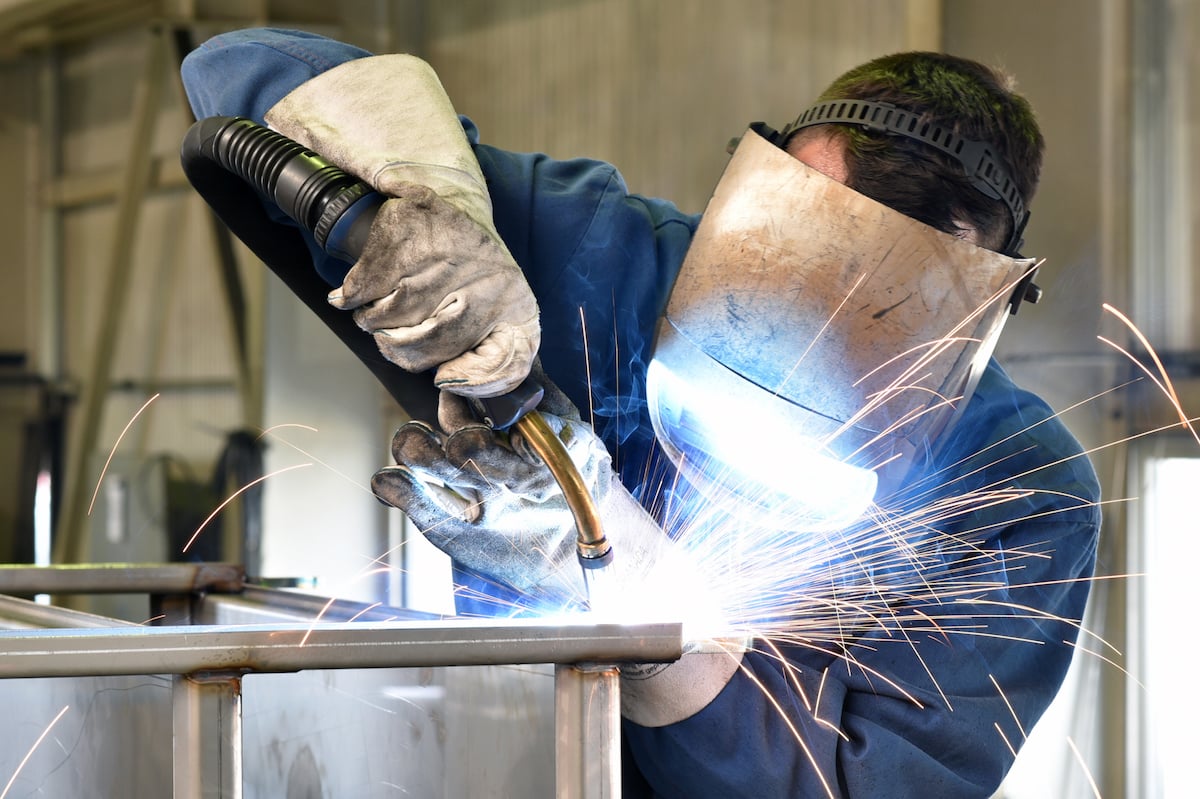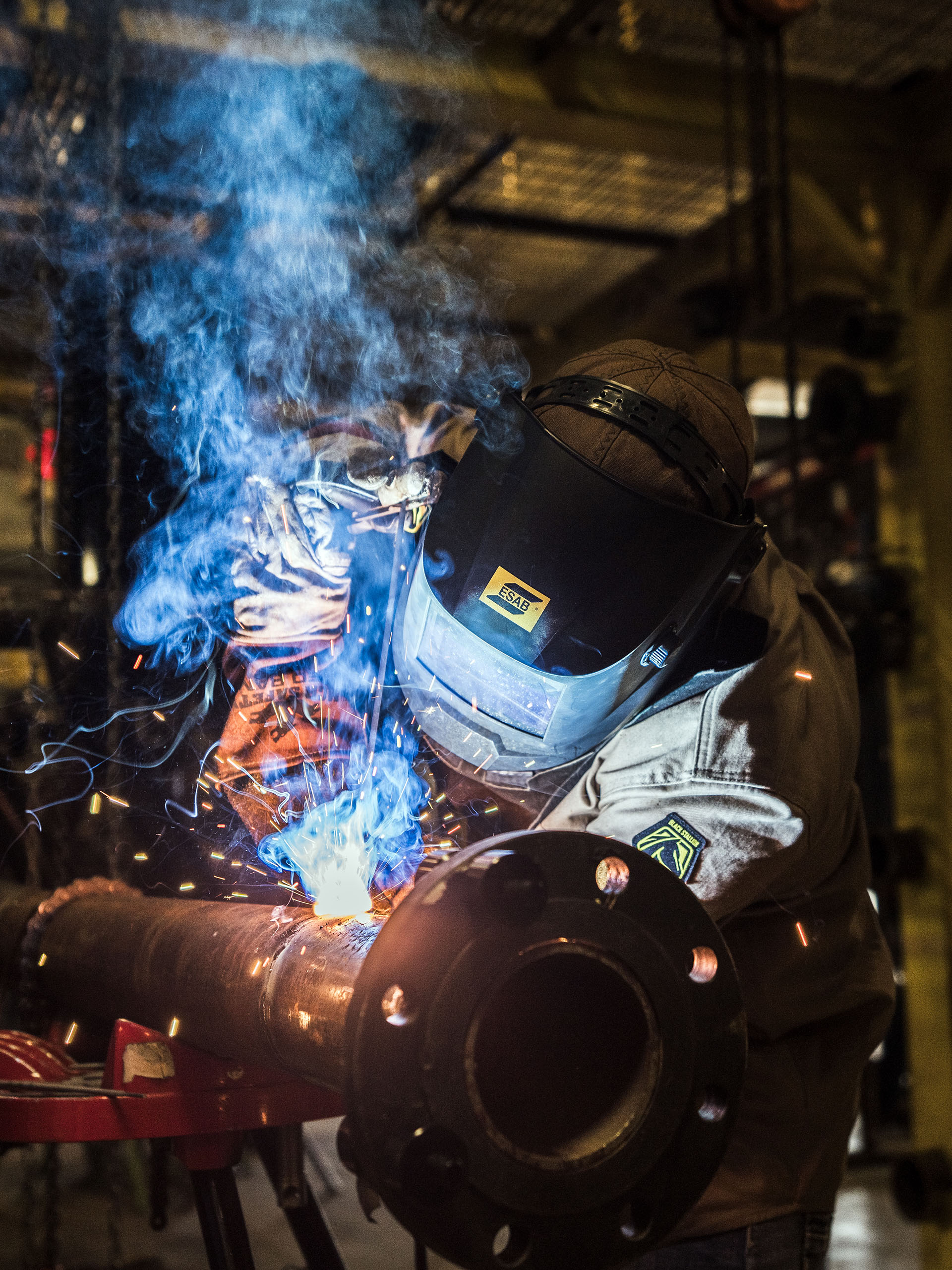Typical Welding Repair Issues and How to Address Them Efficiently
Welding repair work usually encounter a variety of issues that can threaten the honesty of the last item. Usual troubles consist of poor infiltration, porosity, and misalignment, to name a few. Each defect provides special challenges that require specific approaches for resolution. Understanding these issues is necessary for welders intending to improve their end results and abilities. This discussion will certainly explore these typical welding repair service issues and effective techniques to resolve them.
Inadequate Penetration
Poor infiltration happens when the weld steel falls short to totally fuse with the base material, leading to weak joints and possible structural failings. This concern usually comes from not enough warm input, wrong electrode angle, or improper welding rate. Welders might run into inadequate penetration because of a mistake of the needed criteria for a particular material thickness or type. Furthermore, contamination on the base material's surface area can prevent efficient bonding, worsening the issue. To resolve insufficient infiltration, welders need to assure suitable settings on their devices and maintain a tidy work surface. Routine evaluation of welds is advised to recognize any kind of deficiencies early, permitting for timely improvements and the avoidance of endangered structural honesty in bonded settings up.
Porosity
Porosity is a common defect in bonded joints that materializes as small gas bubbles trapped within the weld steel. This defect can compromise the stability of the weld, resulting in decreased strength and prospective failure under stress and anxiety. Welding. Porosity normally emerges from contamination, wetness, or incorrect welding techniques, which allow gases to leave into the liquified weld pool. To address porosity, welders need to guarantee proper surface area prep work, maintain a clean working setting, and make use of suitable welding specifications. In addition, choosing the best filler material and protecting gas can mitigate gas entrapment. Normal evaluation and screening of welds can help identify porosity early, guaranteeing timely rehabilitative actions are taken, thus protecting the high quality and integrity of the bonded framework
Imbalance
Imbalance in welding can develop from various variables, consisting of incorrect arrangement and thermal expansion. Comprehending the origin is vital for efficient resolution. Several correction methods are readily available to realign elements and ensure architectural honesty.
Sources of Misalignment
Welding misalignment commonly comes from a selection of underlying problems that can endanger architectural integrity. One primary reason is improper fit-up of components prior to welding, which can result in gaps and uneven surface areas. Variants in thermal development throughout the welding procedure can likewise lead to distortion, particularly if the products being signed up with have different coefficients of growth. Additionally, poor securing and fixturing might fail to hold parts securely in location, leading to activity throughout welding. Poorly conserved equipment, including welding equipments and devices, may present variances in the weld grain, additional contributing to imbalance. Driver error, stemming from insufficient training or experience, can likewise play a substantial duty in developing misaligned welds.

Adjustment Strategies Available
Addressing imbalance effectively calls for a mix of corrective strategies tailored to the certain concerns handy. One usual technique is making use of fixtures or jigs to hold components in the correct position throughout welding, guaranteeing consistent alignment. Furthermore, pre-heating the products can help in reducing distortion and improve fit-up. For considerable imbalance, mechanical realignment techniques, such as using hydraulic jacks or clamps, can be employed to deal with the position prior to welding. Post-weld heat therapy may also be necessary to soothe stresses brought on by misalignment. Lastly, cautious examination and adjustment throughout the setup stage can stop imbalance issues from ending up being considerable issues, promoting a smoother welding process and boosting total architectural honesty.
Distortion
Distortion is an usual difficulty in welding that can occur from numerous factors, including unequal heating & cooling. Understanding the root causes of distortion is important for applying reliable avoidance methods. Resolving this issue not only enhances architectural stability but additionally enhances the general top quality of the weld.
Causes of Distortion
When based on the extreme heat of welding, materials commonly undergo adjustments that can lead to distortion. This sensation mostly occurs from thermal development and tightening throughout the welding process. As the weld area warms up, the material expands; upon cooling, it gets, which can develop internal anxieties. Additionally, irregular heating across a work surface can intensify these stresses, leading to bending or bending. The kind of product also plays a substantial duty; metals with differing thermal conductivity and coefficients of growth may respond differently, causing unpredictable distortions. In addition, poor joint layout and inadequate fixturing can add to imbalance during welding, enhancing the likelihood of distortion. Comprehending these causes is important for reliable welding fixing and avoidance techniques.
Prevention Techniques
Reliable avoidance techniques for distortion during welding concentrate on managing warmth input and guaranteeing appropriate joint style. Keeping a consistent warm input aids to minimize thermal expansion and contraction, which can result in distortion. Making use of methods such as pre-heating the work surface can also reduce the temperature slope, advertising consistent heating. Additionally, choosing proper joint designs, such as T-joints or lap joints, can boost security and decrease stress focus. Carrying out correct fixturing to secure the work surfaces in place further help in keeping alignment during the welding process. Staggered welding sequences can distribute warm a lot more uniformly, avoiding localized distortion. By using these methods, welders can significantly reduce the probability of distortion and enhance the overall top quality of their welds.
Fracturing
Breaking is a common concern encountered in welding repairs, commonly arising from different elements such as improper air conditioning rates, material option, or inadequate joint preparation. The event of cracks can substantially endanger the integrity of the weld, resulting in prospective failures throughout operation. To address this issue, welders need to first assess the origin, making certain that products work and appropriately selected for the certain application. In addition, controlling the air conditioning price throughout the welding process is necessary; rapid air conditioning can induce here stress and bring about fracturing. Correct joint design and prep work additionally add to minimizing the danger. Carrying out these techniques can enhance weld top quality and longevity, inevitably decreasing the likelihood of fracturing in finished weldments.

Insufficient Blend
A substantial issue in welding repairs is incomplete fusion, which takes place when the weld steel does not effectively bond with the base product or previous weld passes - Belgrade Welding. This flaw can bring about weaknesses in the joint, potentially compromising the stability of the bonded structure. Aspects adding to incomplete blend consist of insufficient warm input, incorrect welding strategy, and contamination of the surface areas being signed up with. To resolve this issue efficiently, welders must ensure appropriate pre-weld cleansing and surface prep work, along with readjust their welding specifications to achieve appropriate penetration and fusion. Routine evaluation during the welding procedure can likewise aid determine insufficient fusion early, enabling for prompt restorative steps to improve the overall quality of the weld
Overheating
While welding fixings can enhance architectural stability, overheating offers a significant difficulty that can lead to product destruction. Too much warmth during welding can modify the mechanical properties of metals, leading to decreased strength, boosted brittleness, and warping. This sensation is especially critical in high-stress applications where structural dependability is vital. Recognizing overheating can involve visual evaluations for discoloration or distortion, in addition to keeping an eye on temperature during the welding procedure. To mitigate the dangers related to getting too hot, welders should utilize proper methods, such as managing heat input, changing travel speed, and utilizing appropriate filler materials. Additionally, applying pre- and post-weld warmth therapies can assist restore material homes and enhance the general quality of the repair work, making certain long-lasting performance and safety and security.
Regularly Asked Questions
What Are the Usual Signs of a Welding Problem?

Exactly How Can I Examine My Welds for High quality?
To examine welds for quality, one can use aesthetic assessments, ultrasonic screening, and radiographic techniques. Each method guarantees structural integrity, determines defects, and verifies adherence to specified criteria, ultimately boosting the reliability of the bonded joints.
What Security Safety Measures Should I Take While Welding?
When welding, one ought to focus on safety and security by wearing suitable individual safety tools, making sure appropriate ventilation, securing flammable products away, preserving a tidy workspace, and being mindful of surroundings to protect against mishaps and injuries.
Can I Fix a Weld Without Renovating the Entire Joint?
Repairing a weld without renovating the whole joint is feasible, relying on the damage (Montana Mobile Welding and Repair Fabrication). Methods such as grinding, including filler material, or using a welding process can efficiently attend to certain problems while protecting the surrounding structure
What Devices Are Important for Effective Welding Fixes?
Crucial tools for reliable welding repairs consist of a welding equipment, wire brush, mill, safety equipment, clamps, and filler materials. Each tool plays an important duty in making sure high quality and safety throughout the fixing procedure. Porosity generally emerges from contamination, dampness, or improper welding strategies, which enable gases to run away into the liquified weld pool. Improperly conserved equipment, consisting of welding equipments and tools, may introduce incongruities in the weld grain, more contributing to imbalance. When subjected to the intense heat of welding, products often go through changes that can lead to distortion. Fracturing is a common problem come across in welding repair services, frequently resulting from various aspects such as incorrect cooling prices, product choice, or poor joint prep work. A significant concern in welding repair work is insufficient blend, which happens when the weld steel does not appropriately bond with the base material or previous weld passes.